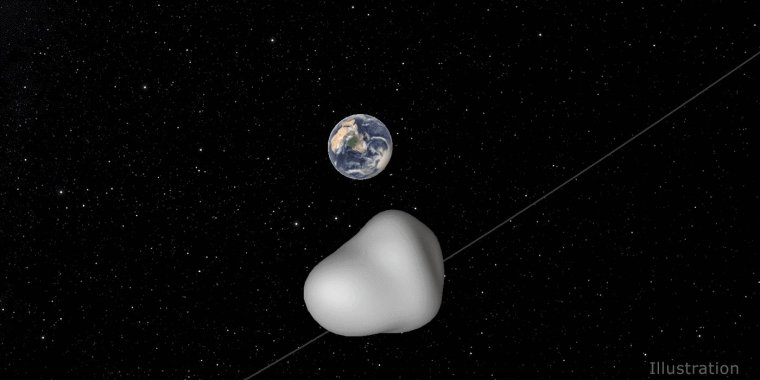| News / Science News |
Asteroid Tracking Network Observes Close Approach
On Oct. 12 EDT (Oct. 11 PDT), a small asteroid designated 2012 TC4 will safely pass by Earth at a distance of approximately 26,000 miles (42,000 kilometers). This is a little over one tenth the distance to the Moon and just above the orbital altitude of communications satellites. This encounter with TC4 is being used by asteroid trackers around the world to test their ability to operate as a coordinated international asteroid warning network.

On Oct. 12 EDT (Oct. 11 PDT), 2012 TC4 will safely pass by Earth at a distance of approximately 26,000 miles (42,000 kilometers). ![]()
2012 TC4 is estimated to be 50 to 100 feet (15 to 30 meters) in size.
Orbit prediction experts say the asteroid poses no risk of impact with Earth. Nonetheless, its close approach to Earth is an opportunity to test the ability of a growing global observing network to communicate and coordinate its optical and radar observations in a real scenario.
This asteroid was discovered by the Panoramic Survey Telescope and Rapid Response System (Pan-STARRS) in Hawaii in 2012.
Pan-STARRS conducts a near-Earth object (NEO) survey funded by NASA's NEO Observations Program, a key element of NASA's Planetary Defense Coordination Office. However, 2012 TC4 traveled out of the range of asteroid-tracking telescopes shortly after it was discovered.
Based on the observations they were able to make in 2012, asteroid trackers predicted that it should come back into view in the fall of 2017.
Observers with the European Space Agency and the European Southern Observatory were the first to recapture 2012 TC4, in late July 2017, using one of their large 8-meter aperture telescopes. Since then, observers around the world have been tracking the object as it approaches Earth and reporting their observations to the Minor Planet Center.
Asteroid TC4's closest approach to Earth will be over Antarctica at 1:42 AM EDT on Oct. 12 (10:42 p.m. PDT on Oct. 11). Tens of professionally run telescopes across the globe will be making ground-based observations in wavelengths from visible to near-infrared to radar.
Amateur astronomers may contribute more observations, but the asteroid will be very difficult for backyard astronomers to see, as current estimates are that it will reach a visual magnitude of only about 17 at its brightest, and it will be moving very fast across the sky.
No asteroid currently known is predicted to impact Earth for the next 100 years. (NASA)
YOU MAY ALSO LIKE




